Administrative units of Pakistan
The administrative units of Pakistan (Urdu: پاکستان کی انتظامی اکائیاں) consist of four provinces (Balochistan, Khyber Pakhtunkhwa, Punjab, and Sindh), two autonomous territories (Azad Jammu and Kashmir, Gilgit-Baltistan) and one federal territory (Islamabad Capital Territory). Moreover, it also claims union territories of Jammu and Kashmir and Ladakh, currently controlled by India. Each province and territory is subdivided into divisions, which are further subdivided into districts, which are further subdivided into tehsils, or taluka, which are further subdivided into union councils.[1]
| Administrative units of Pakistan پاکستان کی انتظامی اکائیاں | |
|---|---|
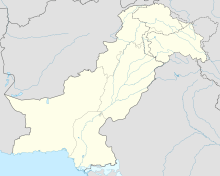 | |
| Category | Federated state |
| Location | Islamic Republic of Pakistan |
| Created | 1 July 1970 |
| Number | 4 Provinces 2 Autonomous Territories 1 Federal Territory |
| Populations | Least 2,441,523 (Gilgit-Baltistan)
Most 110,012,442 (Punjab) |
| Areas | Smallest 906.0 km2 (349.81 sq mi) (Islamabad Capital Territory)
Largest 347,200 km2 (134,050 sq mi) (Balochistan) |
| Government | (National government) Provincial government |
| Subdivisions | Divisions, Districts, Tehsils, Union Council |
 |
|---|
| This article is part of a series on the politics and government of Pakistan |
|
|
Executive:
Judiciary
|
|
|
|
|
|
|
|
History of Pakistan
Early history
Pakistan's provinces and territories were inherited from British India at independence on 14 August 1947. 2 days after independence, the Muslim-majority district of Murshidabad in Bengal moved from Pakistan to India due to an award by the Radcliffe Commission.[2] In 1947, Pakistan consisted of two wings, which were separated by 1600 kilometres of Indian territory. The western wing consisted of the merger of Northwest Frontier Province, West Punjab, and Sindh, the Baluchistan Chief Commissioners Province, thirteen princely states. The eastern wing consisted of East Bengal, the Chittagong Hill Tracts and Sylhet from the former British Raj province of Assam.
In 1948, Karachi was separated from Sindh to form the Federal Capital Territory. In 1950, the Northwest Frontier Province absorbed the princely states of Amb and Phulra while West Punjab renamed itself to Punjab. In 1952, the four princely states in the southwest formed the Baluchistan States Union.
In 1955, the One Unit Policy was launched by Muhammad Ali Bogra, whereby all the provinces and princely states of the western wing were merged and formed West Pakistan, with Lahore as the provincial capital. Simultaneously, East Bengal (including Sylhet and the Hill Tracts) was renamed to East Pakistan, with Dacca as the provincial capital. The One Unit Policy aimed to reduce expenditure and to eliminate provincial prejudices, but the military coup of 1958 signaled difficulties when the first military President, Ayub Khan, abolished the office of Chief Minister of West Pakistan in favour of Governor's rule.
On 7 September 1958, after four years of negotiations, including six months of intense negotiations, Pakistan purchased the Gwadar enclave from the government of Oman for 5.5 billion rupees/ USD $3 million (approx. $22,410,311.42 in 2017). Gwadar formally became part of Pakistan on 8 December 1958 after 174 years of Omani rule. In 1960, the federal capital moved from Karachi to Rawalpindi and in 1961, the Federal Capital Territory was merged into West Pakistan. In 1966, the capital was again moved to Islamabad. In 1962, Dacca was made the legislative capital of the country due to East Pakistan's high population.[3] In 1963, Pakistan entered into a treaty with China to transfer part of the Gilgit Agency to China (Shaksgam Valley—the Trans-Karakoram Tract) with the provision that the settlement was subject to the final solution of the Kashmir dispute.
Since 1970
In 1970, the second military President, Yahya Khan, abolished West Pakistan and established four new provinces: Sindh, Balochistan, Northwest Frontier Province and Punjab. In 1971, East Pakistan seceded to form Bangladesh in the Bangladesh Liberation War. In 1974, the remaining princely states of Hunza and Nagar were abolished and their territories merged into Gilgit Agency, to form the Northern Areas. In 1975, portions of the districts of Peshawar and Dera Ismail Khan were separated to form the Federally Administered Tribal Areas. In 1981, the region around Islamabad was separated from Punjab, and renamed to Islamabad Capital Territory.
In August 2000, divisions were abolished as part of a plan to restructure local government, followed by elections in 2001. Many of the functions previously handled by the provinces had been transferred to the districts and tehsils. In 2008, the government restored the former divisions and appointed commissioners.
In 2009, the Northern Areas were renamed to Gilgit-Baltistan and became a de facto province.[4][5] In 2010, the Northwest Frontier Province was renamed to Khyber Pakhtunkhwa.[6] In 2018, the National Assembly of Pakistan and Khyber Pakhtunkhwa Assembly passed the historic FATA Merger Bill - with the adoption of the Twenty-Fifth Amendment Act of 2018. On 31 May, the final step in the merger of the FATA with Khyber Pakhtunkhwa (KP) was completed, as President Mamnoon Hussain signed the 25th Constitutional Amendment Bill into law. Thus FATA status was abolished as a separate entity and was merged into Khyber Pakthunkhwa province.[7][8][9]
Tiers of Pakistan
The diagram below outlines the six tiers of government:
| Country (i.e. Pakistan) | |||||||||||||||||
| Province (e.g. Punjab Province) | |||||||||||||||||
| Division (e.g. Rawalpindi Division) | |||||||||||||||||
| District (e.g. Jhelum District) | |||||||||||||||||
| Tehsil (e.g. Sohawa Tehsil) | |||||||||||||||||
| Union Council (e.g. Domeli UC) | |||||||||||||||||
Current administrative units of Pakistan
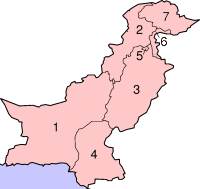
| English name | Urdu name | Abbreviation | Capital | Second Largest City | Emblem | Flag | Map | Map key | Population (2017) |
Area (km²)[10] |
Density (per km²) |
|---|---|---|---|---|---|---|---|---|---|---|---|
| Azad Jammu and Kashmir[lower-alpha 1] | آزاد جموں و کشمیر | AJK | Muzaffarabad | Other |  |
.svg.png) |
6 | 4,045,366 | 13,297 | 223.55 | |
| Balochistan | بلوچستان | BL | Quetta | Khuzdar |  |
.svg.png) |
1 | 12,344,408 | 347,190 | 37.91 | |
| Gilgit-Baltistan[lower-alpha 1] | گلگت بلتستان | GB | Gilgit | Skardu | 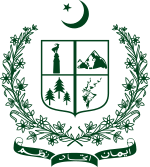 |
_(claims_hatched).svg.png) |
7 | 1,249,000 | 64,817 | 26 | |
| Islamabad Capital Territory | اسلام آباد دار الحکومت | ICT | Islamabad | Not Applicable | 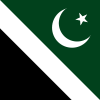 |
_(claims_hatched).svg.png) |
5 | 2,006,572 | 906 | 1,271.38 | |
| Khyber Pakhtunkhwa | خیبرپختونخوا | KP | Peshawar | Mardan | 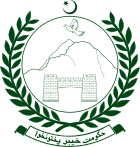 |
.svg.png) |
2 | 35,525,047 | 101,741 | 349.17 | |
| Punjab | پنجاب | PJ | Lahore | Faisalabad | .svg.png) |
3 | 110,012,442 | 205,344 | 535.74 | ||
| Sindh | سندھ | SN | Karachi | Hyderabad | 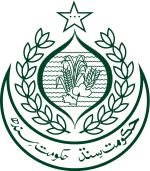 |
.svg.png) |
4 | 47,886,051 | 140,914 | 339.82 | |
| Pakistan | پاکستان | PK | Islamabad |  |
 |
214,261,409 | 874,209 | 223.79 |
- Disputed with India.
Current proposals
See also
- Local government in Pakistan
- Divisions of Pakistan
- Districts of Pakistan
- Tehsils of Pakistan
- Union councils of Pakistan
- Cantonments (Pakistan), permanent military stations, which may include significant civilian populations
- Former administrative units of Pakistan
- Former Princely states of Pakistan
- Pakistani subnational abbreviations
- ISO 3166-2:PK
- List of cities in Pakistan
- List of capitals in Pakistan
- List of cities in Pakistan by population
- List of Pakistani provinces by gross domestic product
- List of administrative units of Pakistan by Human Development Index
References
- "List of Districts, Tehsils/Talukas" (PDF). Pakistan Bureau of Statistics. July 2014. Retrieved 15 October 2016.
- "Murshidabad Govt Website". Archived from the original on 16 July 2014. Retrieved 17 December 2018.
- Pakistan Affairs. Information Division, Embassy of Pakistan. 1968. p. 19.
- "Northern Areas renamed Gilgit-Baltistan Poll for assembly, CM in Nov Regional groups unhappy: Autonomy package for NAs approved". DAWN. 30 August 2009.
- "Disputed Northern Areas renamed as Gilgit-Baltistan". Hindustan Times. 30 August 2009.
- "From NWFP to Khyber Pakhtunkhwa". DAWN. 1 April 2010.
- "New dawn for FATA as K-P approves merger - The Express Tribune". 27 May 2018.
- Hayat, Arif (27 May 2018). "KP Assembly approves landmark bill merging Fata with province".
- Wasim, Amir (31 May 2018). "President signs KP-Fata merger bill into law".
- "Area, Population, Density and Urban/Rural Proportion by Administrative Units". Population Census Organization, Government of Pakistan. Archived from the original on 22 December 2010.
- Zaidi, S. Akbar (11 January 2014). "Karachi as a province".
- Correspondent, The Newspaper's (22 May 2018). "TSH to shut Hazara after Eid".
- "Treasury benches demand appreciation, opposition criticize govt for ignoring development -". 8 May 2018.
- Singh, Pallavi (29 April 2010). "Gilgit-Baltistan: A question of autonomy". The Indian Express. Retrieved 27 December 2016.
But it falls short of the main demand of the people of Gilgit- Baltistan for a constitutional status to the region as a fifth province and for Pakistani citizenship to its people.
- Shigri, Manzar (12 November 2009). "Pakistan's disputed Northern Areas go to polls". Reuters. Retrieved 27 December 2016.
Many of the 1.5 million people of Gilgit-Baltistan oppose integration into Kashmir and want their area to be merged into Pakistan and declared a separate province.
- https://www.dawn.com/news/1457865